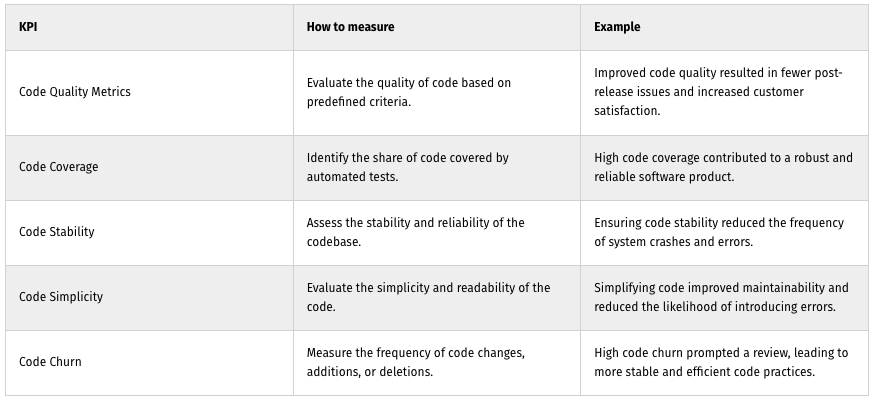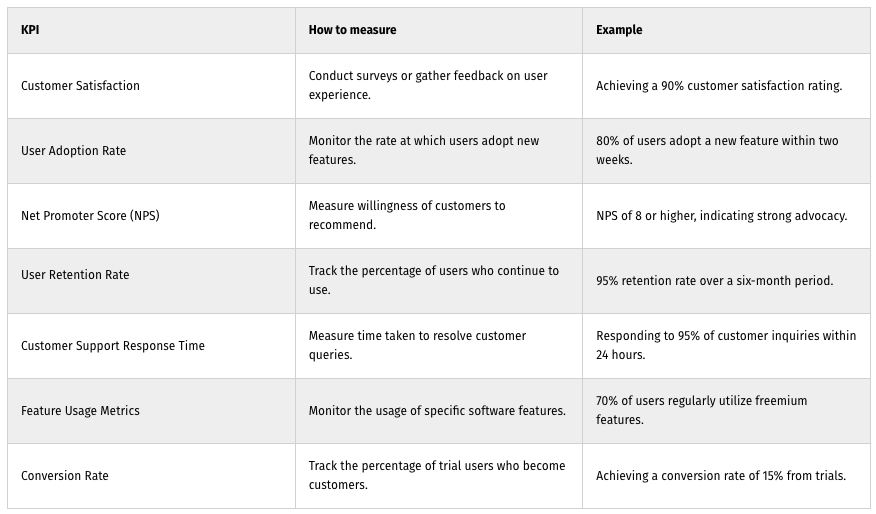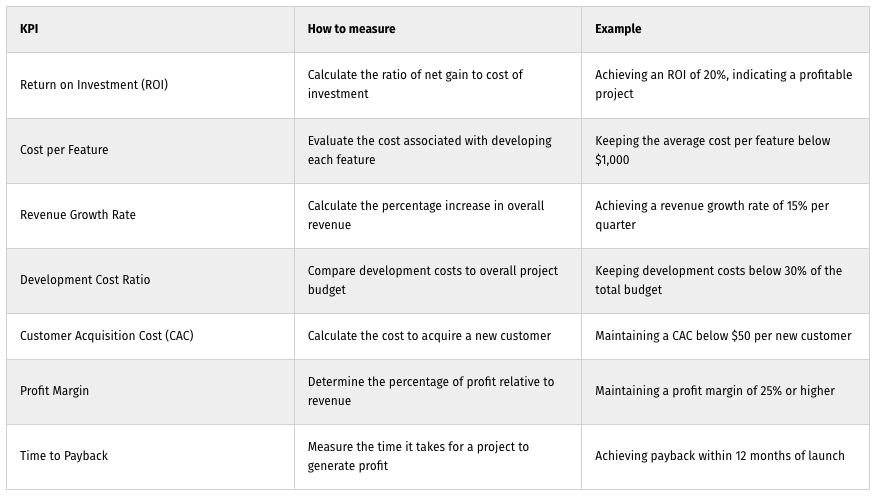What Gets Measured Gets Managed
“What gets measured gets managed.” This quote is said to be from Peter Drucker, a leading management consultant of the twentieth century. But the actual words went something like this: “What gets measured gets managed—even when it’s pointless to measure and manage it, and even if it harms the purpose of the organization to do so,” and the credit goes to the journalist Simon Caulkin for coming up with those words. Drucker, in turn, put it like this: “Moreover, because knowledge work cannot be measured the way manual work can, one cannot tell a knowledge worker in a few simple words whether they are doing the right job and how well they are doing it.”
We’re totally on board with Drucker here. People are more than just numbers, and there are various factors that can impact how effective software developers are. Plus, you can’t quantify passion, creativity, and commitment to company values with numbers. Yet, when it comes to catching hiccups in a project, it’s crucial to use and scrutinize metrics and Key Performance Indicators (KPIs) consistently. So, how do we do it in software development?
What Is A KPI In A Remote Development Team?
In software development, a Key Performance Indicator, or KPI, is like a scoreboard for your team’s success. It’s a set of numbers and metrics that tell you how well your software project performs. Instead of guessing or hoping for the best, KPIs provide concrete data to show whether your team is meeting its goals. For example, one KPI might track how quickly your team resolves issues or fixes bugs. This helps you gauge the efficiency of your development process. Another KPI could measure user satisfaction, indicating whether people are happy with your software. In a nutshell, KPIs are the numbers that keep your team on track and help you build high-class software.
Why Are KPIs Important In Remote Software Development?
KPIs are crucial in software development, especially when working with remote teams or outsourcing projects. Here’s why KPIs are so important:
- KPIs find and fix problems in making software, ensuring everything runs more smoothly and they lead to better results.
- KPIs are progress reports for software projects. They tell everyone how things are going, like a snapshot of the project. This helps manage the work better and plan for the future, so everyone knows what’s happening.
- By keeping an eye on how things are going and making things better as you go along, you can avoid extra work and costs. It’s like fixing things before they become big problems, saving time and money.
- KPIs also help make smart choices. Instead of guessing, use data to decide where to put your energy for the best results.
In essence, KPIs in software development represent a strategic road map. They navigate distributed agile teams through challenges and keep the work cost-effective, ending up in the delivery of high-quality software products.
When Is It Efficient To Introduce KPIs To A Remote Software Development Team?
Introducing KPIs will make sure you’re on the right track. But when is the best time to start using them? Use these three signs to decide:
- It’s not a quick project
If your project is a marathon, not a sprint, that’s the perfect time for KPIs. They work best when you have a bit of time to see progress and make improvements. - You have clear milestones and deliverables
This way, you know where you’re going and can measure progress along the way. - There’s at least a high-level project plan
Before you hit the road, it’s good to have a plan. Having at least a high-level project plan means you’re ready to start using KPIs to keep things on course.
So, if your project is more like a journey than a quick ride, with clear milestones and a road map in hand, that’s the efficient time to bring in KPIs and set up a smoother, more successful trip.
Types Of KPIs For Software Development Teams
Before we move to the custom software development KPIs, let’s take a short look at what matters for any project:
- Schedule compliance
Keeps the development progress aligned with the planned schedule, highlighting reasons for deviations such as missing requirements or technical risks. - Accuracy estimate variance
Indicates how much the actual efforts deviate from the initial estimate, helping determine the remote development team’s velocity. - Budget variance
Tracks deviations from the planned budget, especially when unplanned expenses for specific tasks are involved.
But just like with any project, details compose the whole picture. It is essential to break KPIs down to the level where production happens, finances flow, and customers use the software.
First, let’s take some time to explore the efficiency and workflow metrics and what decisions they help make on the way to successful delivery.
Productivity And Workflow Software Development KPIs
As you can see, we focus on executing tasks and regular monitoring. However, remember that the remote software development team’s motivation and comfort are always as important as their expertise and speed of accomplishing projects.
Software Development Performance And Code Quality KPIs
Checking how well the code performs and its quality is crucial. It helps start things like code reviews and testing on time. Plus, since distributed agile teams change, having good code becomes even more important. Gone are the days when developers wrote code just for themselves—now, it needs to be neat, accurate, and well-organized.
Customer Satisfaction KPIs In Software Development Projects
Keeping customers happy usually comes down to two things: how easy your software is to use, and how well it solves problems. If any metrics show issues in these areas, the responsible remote development team gets a heads-up that improvements are needed.
Financial KPIs In Software Development Projects
Finally, money matters too. Software development isn’t just about pure coding; it includes steps like project discovery and business analysis. This means the whole project can bring in financial profit. That’s why we keep a close eye on financial metrics—to make sure the team did the job right and made the project a success.
These financial indicators tell us how the project is doing now and how it could make more profit in the future. Again, any differences might be specific to each case, showing problems in different parts of the project.
When KPIs Might Not Be Useful
KPIs are powerful, but they shouldn’t stifle creativity and innovation. Use them as guiding principles, not rigid constraints. Allow flexibility within the development process, balancing the pursuit of KPI targets with the need for exploration and creativity. We recommend seeing KPIs as tools that inform decision-making rather than strict rules. This approach ensures that development teams can adapt, experiment, and foster a culture of continuous improvement.
How To Avoid Micromanagement When Placing KPIs For Remote Development
Implementing KPIs is like steering a ship—you want to set the course without becoming too controlling. So, we offer ten steps to make sure you empower employees with this tool rather than constrain them:
- Lay out why KPIs matter and how they tie into the bigger picture. When the remote development team understands the “why,” they’re more likely to sail in the right direction independently.
- Get your team’s input on setting targets. When they have a say in the destination, they’re more invested in the journey.
- Keep the focus on what needs to be achieved, not how to get there. This allows your team to chart their own course and find creative solutions.
- Drop anchor regularly with team check-ins. Open communication minimizes the need for constant oversight and keeps everyone on course.
- Harness the power of trust. When your remote development team feels trusted, they navigate their responsibilities with confidence and skill.
- Arm your crew with the tools and training they need. This empowers them to navigate challenges without waiting for your command.
- Hoist the flag for every achievement. Celebrating successes builds morale and motivation without having to keep an eye on every move.
- Be ready to adjust the sails with changing winds. Flexibility in adapting KPIs ensures that your journey stays on course, even through unexpected waves.
- Lead from the helm, striking the right balance between guidance and letting your crew steer. The way you lead sets the tone for the entire project.
- Instead of handing out maps for every challenge, encourage your crew to plot their own course. Fostering a culture of self-sufficiency turns your team into seasoned navigators.
These ten steps will help you chart a course with KPIs, making your remote development team sail toward success without feeling like they’re under a watchful eye at every turn.
Manage The Measurable, Nourish The Immeasurable
In the world of software development, success isn’t just about hitting numbers; it’s about the passion, creativity, and commitment that drive projects forward. While these aspects might not fit neatly into spreadsheets, they are the heartbeat of any successful endeavor. However, the strategic use of KPIs is essential to keep projects on track and tackle challenges effectively. KPIs act like a road map, helping distributed teams navigate complexities without losing the human touch.
Image Credits:
- The tables within the body of the article have been created/supplied by the author.
Originally published at timspark.com.




